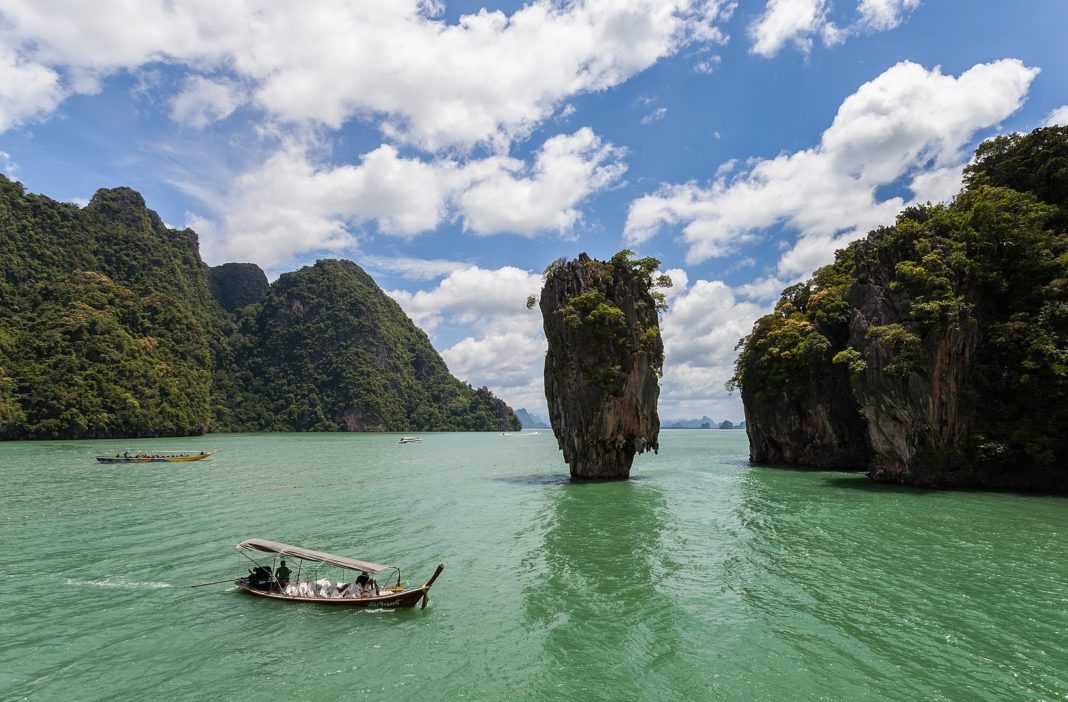The limestone cliffs of Phang Nga Bay were formed over millions of years by a process called karstification. Karstification is a type of chemical weathering that occurs when rainwater and other acidic liquids dissolve limestone rocks. The dissolved limestone is then carried away by rivers and streams, leaving behind the eroded limestone cliffs. t was formed when the area was covered by a shallow sea. Over time, the sea receded and the limestone was exposed to the elements. The limestone was then eroded by the rain, wind, and waves, creating the dramatic formations that we see today.

The limestone cliffs of Phang Nga Bay are a truly breathtaking sight. They rise majestically from the emerald green waters of the bay, creating a landscape of jagged peaks, hidden caves, and secluded coves.

One of the most striking features of the limestone cliffs is their unique shape and texture. The cliffs have been eroded by the elements over millions of years, creating a variety of interesting shapes, such as pillars, spires, and arches. The limestone is also covered in a variety of colors, including white, gray, and brown.

Another beautiful feature of the limestone cliffs is their reflection in the water. The emerald green waters of Phang Nga Bay perfectly reflect the limestone cliffs, creating a stunning mirror image. The reflections are especially beautiful at sunrise and sunset, when the water is calm and the sky is ablaze with color.

The limestone cliffs of Phang Nga Bay are a truly beautiful and unique sight. They are a testament to the power of nature and the beauty of the natural world.
According to the Internet







![[HONORARY PROFESSOR OF RECORD FOR PRACTICE AND EMPIRICAL RESULTS – 2024] RECORD HOLDER CHU BAO QUE (BAC GIANG PROVINCE, VIETNAM)](https://worldmark.world/wp-content/uploads/2024/05/z5401509010514_2898fa0bcee3af78744ceb5f3984a5c8-218x150.jpg)







